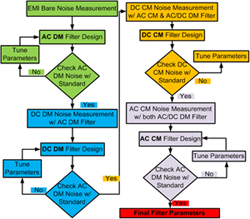
Fig. 1. Equivalent circuits for EMI filter analysis.
Huge bulky EMI filters are inevitable parts in power electronic systems, which not only provide attenuation to the EMI noise but also take a significant portion of the total volume and weight of converters. It is more obvious in DC-fed motor drive systems (shown as Fig. 1) with long con-nection cables where EMI filters are required for both the AC output and the DC input side. Interaction exists between the AC and DC side, for DM noises, due to the presence of the big dc-link capacitor, the AC and DC side are somehow decoupled and the equivalent circuit can be separated for the DC and AC side at a certain operation point. Adding a filter on one side will not change the propagation path impedance of the other side. However, the noise source for the AC side is related to the voltage harmonics on the DC link capacitor and the noise source for the DC side is related to the harmonics of the output AC current. Adding filters on one side will change those harmonics, thus it will change the noise source of the other side and there is still interaction between AC and DC DM filters.
Considering that the CM noise is going though both the AC and DC side, and there is no such big low impedance path as the dc link capacitor in DM propagation path, the equivalent circuit includes the interaction between the AC and DC side for the CM noise. Adding an EMI filter on one side will influence the EMI noise level on the other side. If this interaction is not considered in the filter design procedures, even though one can design an optimized filter for one side to meet the standard, adding a filter on the other side will make the noise worse on this side and finally fail to meet the standard. To minimize the impact on the EMI noise of one side caused by adding a filter on the other side, a certain design order must be followed to design the AC, DC, CM and DM filters. Fig.1 shows an optimized design procedure for designing both AC and DC filters. Using this method, both AC and DC noises can meet the standard.

Fig. 2. EMI filter design sequence for both AC and DC Side.
























































































